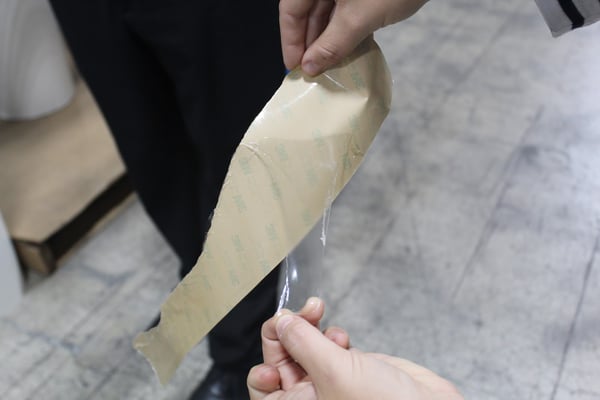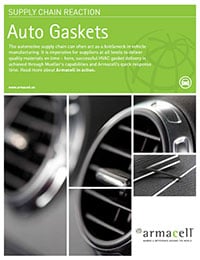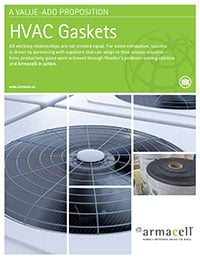.jpg?width=600&name=IMG_0794%20(1).jpg)
Most products that your business produces will require adhesives to help them function properly, which is why choosing the best tape or adhesive for your products every time is so important. If you don’t make the right choice, your products increase their risk for failure.
What Do You Need to Know Before Selecting an Adhesive?
There are a few important questions you need to ask yourself before choosing an adhesive to guide your selection process.
- What surface are you applying the adhesive to?
- Is the surface clean?
- Is the surface textured or smooth?
- What is the operating temperature of the product?
- Is it for indoor or outdoor use?
- Is this a temporary or permanent application?
- Are there any industry-specific or customer specifications that need to be met (ex. UL certification)?
Let’s further examine how these questions can affect your adhesive selection.

What Factors Should I Consider When Selecting an Adhesive For My Product’s Surface?
There are multiple factors to consider when deciding on an adhesive. Let’s examine some of the most important elements based on the surface it will be placed on.
Material Surface Energy
Different materials have unique surface energies, which can dictate your adhesive decision.
If a material has low surface energy, it is more difficult to apply adhesives to; the opposite is true for high surface energy materials. A material’s surface energy is measured by its dyne level.
Dyne levels are determined by a simple test. To determine a material’s level, apply a dyne pen to the material’s surface and watch for beading. If there is no beading at the center of the line within two seconds, use the next highest dyne level pen and re-do the same test. The test is finished after beading occurs within two seconds. The material’s dyne level is determined by the highest dyne number pen or marker that was used when beading did not occur.
Identifying a material’s dyne level and surface energy will narrow down the choices you have for adhesives. All materials have their own unique surface energy, so knowing what you’re dealing with will help make your decision easier. The lower the dyne level, the harder it is to adhere to.
This means that metals such as copper, aluminum, and stainless steel are easy to adhere to, while plastics such as polypropylene and polyethylene are much more difficult to apply an adhesive to.
This chart pairs some common materials with their respective dyne levels:
|
Metals |
High Surface Energy Plastics |
Low Surface Energy Plastics |
|
Bolded Numbers: Dynes/cm |
||
|
Copper: 1103 |
Fiberglass: 50 |
PVA: 37 |
|
Aluminum: 840 |
Nylon: 46 |
Polystyrene: 36 |
|
Stainless Steel: 700-1000 |
Polyester: 43 |
Acetal: 36 |
|
Zinc: 753 |
Polyurethane Paint: 43 |
Polyethylene: 31 |
|
Tin: 526 |
Polycarbonate: 42 |
Polypropylene: 29 |
|
Lead: 458 |
PVC: 39 |
Teflon: 18 |
|
Glass: 200-500 |
Acrylic: 38 |
Powder Coated Paints: Varies |
Textured & Smooth Surfaces
Just like you need to understand a material’s surface energy, you need to be aware of the surface’s texture.
If you are applying adhesives to a smooth surface, you can use a thinner adhesive since there aren’t any contours or gaps that need to be gripped.
If you are applying to a more textured surface that has gaps to fill, you need to use a thicker adhesive. A thick adhesive can fill irregular surfaces and ensure strong adhesion.
Cleaning the Surface
The number-one mistake people make when applying adhesives is not cleaning a material’s surface before attaching their adhesive of choice.
Avoid this issue by wiping down materials with an 80/20 isopropyl-water blend to ensure that they are clear of waxes, oils, and mold releases. These can act as a barrier between the adhesive and the material, causing adhesion failure. For this reason, the surface of a material should always be dry and free of contamination.
How Does the Operating Environment Affect My Adhesive Decision?
The temperature and amount of exposure to the elements will all affect an adhesive’s performance.
You need to consider if adhesives will be exposed to heat for long or short periods of time. Heat has the potential to melt and loosen some adhesives, which reduce its tack and ability to do its job. On the other hand, the cold can cause certain adhesives to stiffen and reduce tack.
You also need to be aware of whether the adhesive will be applied in an indoor or outdoor application. Elements such as moisture, sunlight, and dust/debris can all work to degrade adhesives.
How Does My Application Affect My Adhesive Decision?
There are certain types of adhesives that are recommended based on application length and permanence. There are three kinds of commonly used adhesives you need to consider:
- Temporary
- Permanent
- Removable
A temporary adhesive is used in applications where you need two materials held together before permanently placing screws or other fastening devices.
Permanent adhesives need long lifespans to support a product’s integrity for as long as it is used.
In instances where a technician has to work on a product, use removable adhesives. Technicians have to pull components apart when conducting maintenance and need access in the future.
How Do Specifications Affect My Adhesive Decision?
Another important set of components for adhesive selection is industry and customer specifications.
Most applications need to be Underwriters Laboratory (UL) certified, which means that they meet regulatory standards relevant to the industry you are working in. It is vital to choose an adhesive that fulfills these requirements to be compliant.
Customers may also need adhesives to be flame retardant (FR) or protect against other elements. You should always assess the adhesive’s operating environment, as discussed above, to ensure that you meet customer specifications.
How Can I Avoid Common Mistakes When Choosing an Adhesive?
It is crucial to stick to the fundamentals of adhesives to avoid issues in the future. If you answer the questions in this guide, you should have a pretty clear idea of what adhesive you need.
However, mistakes happen.
Here are some steps you can take to avoid mistakes when it comes to selecting and applying an adhesive:
- Remember to clean material surfaces
- Give the adhering process the time it needs (minimum of 24 hours, preferably 72 hours)
- Apply even pressure during application
It is also important to not let past applications be the model for future decisions. Just because you used a specific adhesive in a past project does not make it right for future ones. You should always treat new projects as new applications, even if there are similarities.
Most of all, it’s important that you don’t skip any of the steps discussed so far. If you neglect an aspect of the decision or element of the adhesive, you can end up choosing the wrong adhesive for you or your customer’s application.
.jpg?width=600&name=IMG_0828%20(1).jpg)
What Adhesives Should I Use in My Application?
Now that you know the essential questions to ask yourself in the selection process, it’s time to discuss some adhesives that might suit you and your customer’s needs.
3M Adhesives
3M adhesives are very well-suited for several applications but excel at handling high and low surface energy plastics. They determine the best adhesive family for your customer based on selection criteria such as:
- Adhesives for aluminum, copper, glass, steel, and other metals (high surface energy)
- Adhesives for polystyrene and polyethylene (low surface energy)
- Specialty adhesives are also available for difficult and unique applications
Above all, you must determine what is needed for each application to make the right choice. Many adhesives can be customized for you and your application’s needs.
How Do I Use This Information to Decide on an Adhesive?
Finding the right adhesive for your project can be complicated. That’s why it is so important that you use the right adhesive to ensure product functionality, customer satisfaction, and a more straightforward manufacturing process.
If you differentiate adhesives based upon the application surface, operating environment, specifications of a product, and whether you need rubber or acrylic-based materials you can confidently select the best adhesive for any application.
Use this guide and all the questions discussed above to assist you in making your decision. Following these tips and steps will lead you to the right adhesive for any application.





